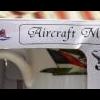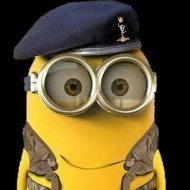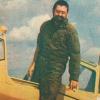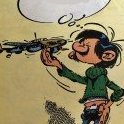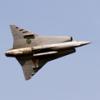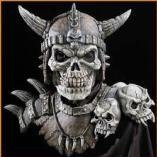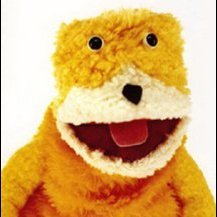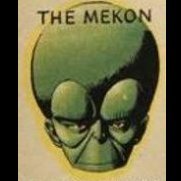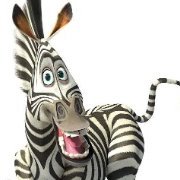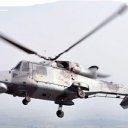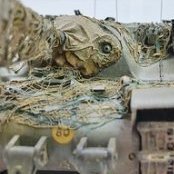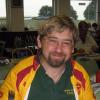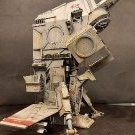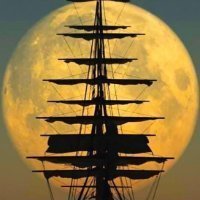Leaderboard
Popular Content
Showing content with the highest reputation on 13/01/22 in all areas
-
Hiya Folks, I am a sucker for RAF transports for obvious reasons and one aircraft that I have really wanted to build as an injection moulded kit (as opposed to the 1/72nd Airways and 144th Wesh Models vacuforms which I built, very badly, many moons ago!) ....... is the Handley Page Hastings! So although it wasn`t in 1/72nd scale as I`d really like..... when Mikr Mir added the Hastings to their ever expanding 1/144th scale RAF transport collection I just had to buy one and give it a go. Construction was pretty straightforward, although the tailplane took some work to fit and blend into the fuselage,.....this being because there us now a C.2/T.5 kit available which includes optional parts for the later lower mounted, larger horizontal tailplane fitted to this later variant,.... and of course the kit also includes a radar bulge below the fuselage for the radar training T.5. My model was finished using rattle can silver and white and as the blue in the kit roundels was too light I used Xtradecal roundels, fin flashes and blue stripes for the cheat lines instead. Now I`m not used to working in such a small scale and my eyes are struggling these days, so I missed a few details which now appear glaringly obvious in these large photos,... ah well! Despite this I`m still pleased with how the model turned out. I`d love to do a few more including at least one grey and white Coastal Command Met Recce aircraft,..... so if Xtradecal would like to do a sheet like they did for the 1/144th Beverley & Argosy,...... there are some great colour scheme variations out there for the Hastings, including the RNZAF ones too! Here is the kit box art; And here is the model; Cheers Tony23 points
-
My son bought me this kit for Christmas: Completed out of the box as “Dido” , C Squadron, 4 RTR in Berlin in the early 1960s. Rather unusual in being painted olive drab, with the mantlet cover painted black. While looking for images and information I found this rather nice bit of newsreel: https://www.britishpathe.com/video/VLVA807GJXZU80R6MMI89H8J3QVSD-GERMANY-BRITISH-ARMOURED-EXERCISE-IN-WEST-BERLIN/query/CENTURION Brush painted with Tamiya acrylics, build thread can be found here. Quite a challenging kit for me, rather more complex than the Tamiya AFV kits I have built previously, but very enjoyable. Back to work next week! Thanks for looking. Looks rather good on the shelf with the Comet and Centaur I built at the beginning of last year.19 points
-
19 points
-
Hello Folks, I finshed my Tonka and wanna show you the result. Building Thread Video: https://youtu.be/J1jg-gT6iOU Materials: Mr. Colour Mr. Paint Vallejo Model Air Tamiya Quick Setting Micro Set /Sol Vallejo Putty Kit:19 points
-
Jetmads 1/32nd scale Viggen. What can I say? An impressive model. Very well engineered and very well presented! Resin is brittle, so careful handling required at all stages. Camouflage, it had to be done in fields and meadows! was achieved with Humbrol enamels and a lot of masking tape! I have always loved this aeroplane and now I have one in 1/32nd scale, well I am very, very happy. Thanks for looking Angelo18 points
-
Show me a more inspirational model kit box art, and I’ll eat my Vegemite smeared Corked Hat! I was a little surprised that the PK-13 North American P-51D Mustang had not been chosen for this GB as yet and seeing I have two original top opening examples, it would be silly of me not to attempt to build at least one. I have one pristine, uncut good quality example and another that had been partially started by the previous owner. This one has the fuselage halves and cockpit parts cemented in place, so I’ll have a quiet chat with the GB Hosts to see if they allow this one through (Ha!). This kit really needs no further introduction, I’m sure many of you have built it back in the day and although its not the best shaped P-51 around, I’ll attempt to replicate that beautiful Roy Huxley box top as best as my skills allow. Special thanks should also go to Patrice @TEMPESTMK5, who sent me a set of Kit’s World decals many many years ago. I’ll consider using these, although not sure if I will try to paint the nose checks as I fear those decals will never fit the contours of this kit. Anyway, another kit to try to fit in whilst hosting this massive GB. Let’s hope I can somehow replicate that action packed image thats transfixed in my head! Cheers and regards.. Dave17 points
-
Dear fellow Britmodellers, here's my 1/72 Kovozávody Prostějov Ilyushin Il-2M, built with the addition of Quickboost guns and pitot tube. Painted with Mr.Hobby acrylics. Photographs by Wolfgang Rabel. This is a re-box of the Smer kit with new fuselage and some small parts. Parts are well cast with good engravings, and fit is okay. I replaced the kit's gun barrels with resin parts from Quickboost (QB72182). The QB set also includes the pitot tube, which is missing on the sprue. KP also overlooked the prominent rudder horn on the fin. I made a replacement from stretched sprue, dipped in white glue to form a 'drop' shape. I fabricated a sling seat for the rear gunner from a piece of photo-etch. It's barely visible behind the defense gun: I was not too happy with the kit's decals. Maybe I should have stored them in a cooler place (my flat gets hot in summer). Silvering is evident on close-ups. The delicate aiming device in front of the canopy is a photo-etch piece stolen from an Eduard Set for the Tamiya kit (there's two included!). Here's my home-made rudder balance which is missing in the kit. In this close-up, you can see the Red Star decal broke when I gently pressed it into the recess. Weathering on the undersides was done with artist oils from Winsor & Newton. ... and here's his squadron mate from Black See Fleet, which I built in 2019 when the KP kit was released: Thank you for your interest! Best greetings from Vienna, Roman17 points
-
Hello Folks, I finshed my F14A and wanna show you the result. My Youtube Channel: https://www.youtube.com/channel/UCAjm2GwS9LzaM7oGt0tt5Og Materials: Mr. Colour Mr. Paint Vallejo Model Air Tamiya Quick Setting Micro Set /Sol Vallejo Putty Acrylic Rod Acryl Tube White OSB Board Base Kit: Thanks for watching!!!16 points
-
First attempt at a model aircraft, I usually build cars or help my children with their Warhammer. lots of mistakes along the way but happy enough with the completed model. Vallejo paints used throughout.16 points
-
Hello Ladies and Gentlemen.... The Corsair is my one and for all favourite aircraft, I equally like the story of the VF-17.... They did great in SoPac at the time being... And a lot of firsts indeed... First to use the Corsair in and from a carrier for a war mission... aka, the attack on Rabaul (I mean the first one) Let's talk about another first here... First for a U.S Navy unit and first official.... The Leathernecks did it before but sneaky mode.... "in my fractured french, this capper is Chatte Flambee. I'll translate when we get back. For your protection, I won't explain the purpose of the mission until after we get back here. If it works as I think it will, the japs are going to be very, VERY mad. If you get knocked down, and are taken prisoner, Honest lack of foreknowledge might save your skin.... John Thomas Blackburn 02/26/1944 Soooo the kit is Tamiya with some modifications As usual, I changed the engine for a resin one The bomb rack is a field made one and the bomb came from an accurate miniature set. The first in question was the first official use of the Corsair as a Fighter Bomber, first of a long serie in fact... Paints are from the Ammo Mig U.S Navy air set, weathering is Flory and oil paints... Weathering should have been a bit heavier, when looking at the pics of the real things.... Let's consider that we are now back from that mission.... They got words through the locals in Rabaul, that there was a huge building on the hill overlooking Rabaul harbor... This building used to be the british officers club house.... The japaneses put the building in good use and renamed it "The house of the flowers" High ranking japanese officer and most specially the japanese pilots used it as a "R'n R" place.... I suppose that you've understand what I mean ??? So the mission started before dawn, they came in over the house of flowers just at dawn... At a moment when party goers are either asleep or too intoxicated to do anything useful.... All the bombs hit bullseye and the defense forces of Rabaul have been beheaded for a while.... And a good lot of officer's cars have been blown up for good.... More pics will follow... This one is my 2021 Corsair... So still, I must finish a Corsair this year !! Hum, for outside sunny pics, I need ...well.... Sun.... It's not for tomorrow for sure.... Up to you friends, remarks are welcomed, bantering is mandatory !! Stay safe !! Enjoy Modelling !! CC14 points
-
Not much I can add to all that's been written or all the builds that have been shared of this amazing kit. Even if the mandibles don't sit at the right angle, it's still a majestic piece of engineering; nearly a thousand parts - from the hull halves to a greeblie smaller than a nail paring - all of it fitting perfectly. It's a hypnotizing process to watch the layers and layers of detail build across the hull, and an epic process to paint it all. I learned more building and painting this one several years ago than I have on any other kit. My addiction to WW2 planes started here, which is perhaps the best tribute I can pay to the geniuses who designed the original.13 points
-
Finally my (for now) last batch of Boeing 767s are off the production line. It took a bit longer than planned as life got in the way. Now here we are again and I continue my Boeing 767 parade. This is the very good Zvezda 767-300 kit,which in comparison to the Revell version,is more detailed,esp. the landing gear and engines. The fit overall is very good,although for some reason the kit I used for the Qantas version suffered from a seriously warped fuselage. It took quite a while to straighten it out. The other Zvezda 767s were fine,so I assume this was an isolated incident. Qantas had often painted some of their aircraft in special liveries,so this came probably not by surprise when they promoted Disney's animation hit "Planes" The decals come from PAS decals and are of very good quality. The kangaroo logo is a white printed decal which is surprisingly opaque on the red paint. The decal sheet itself has many details but as they have no white backing,some of the details or the windows are useless as they will either disappear or become too dark on surfaces that are not white. Another note to be taken ,is to use any solvents sparringly or not at all ,while applying the decals.Much better to use only enough water to slide the decals into position. The paints are Gunze,the white for the fuselage was done with Gunze white surfacer 1500,gloss coated with Gunze Premium Gloss prior and after decalling. The windows are from Authentic Airliners. Cheers Alex13 points
-
This I had originally planned to finish in the old Lauda colors by using the decals from the 1991 Revell first release. But unfortunately the decals were beyond use,even after clear coating them prior to application. They simply would not stay on the model or were silvering very badly. So I had to use plan b and repaint the whole model and finish it in its last scheme. I had a decal set from BRAZIL decals,which offers a selection of different 767 liveries,among them this Lauda CS and the Lauda Air Italy. Those decals worked well and the project was solved. After completing I came to the conclusion that this livery is actually more elegant than the earlier variant. Windows are again from AA. The most complicated part on each 767 was their respective door and windows arrangement used by airlines.During my builds I came across 4 !! different layouts🤪 All paints come from Gunze,the numbers I dont have in mind right now,but if anyone has questions about them,I can certainly recheck the exact Gunze paints I used.😉 Cheers, Alex13 points
-
Now, it's time for another bit of history ?? Here are the 2 succesive birds of J.T. Blackburn Both nicknamed "Big Hog" depicting the temperament of the Corsair at the time of landing on a carrier.... Birdcage one has been used to test and qualify the Corsair for carrier operations. And stayed CONUS. And now, family pics ?? Okay gents, now finishing my Phantom My other fav plane !! Seemingly, I like the twisted wings.... More to come soon !! Sincerely. CC13 points
-
Here today I have my build of the hobbyboss TA-152 C-11 in 1/48th scale. This kit was relatively in-expensive but I must say was good value for money. The kit went together without many issues and only required minimal sanding and filling. I used exclusively Mr Hobby Aqueous paints for this build and I must say the paint went down flawlessly. Im not sure about the realistic aspect of the shades but I'm satisfied with the end results. I wanted to achieve a minimal ware and tear look on this build soo only used a dark enamel and then flat coated. I used a mixture of Tamiya's smoke and Mr Hobby flat black to create the exhaust stains effect.12 points
-
12 points
-
The Renault FT-17 was a successful and innovative French tank of the WWI. It had a pioneering design in that the armament for the first time was housed in a fully rotating turret, These tanks were produced in great numbers at the end of the Great War and during the 1920's. Some 3.000 FT-17's were manufactured by French industry and the tank was also license built in many other countries. The Finnish army ordered the first FT-17's in 1919 and in total they operated 32 tanks (14 of the "male-type" with guns and 18 of the "female-type" with a machine guns in the turret). My 1/35 scale model depicts an unknown female-type French FT-17 of the Western Front. I built the tank 15 years ago from a Polish RPM kit. Its quality was awful. The fit of the parts poor and the plastic very brittle and the icing on the cake were the unclear instructions. Well, since at that time there were no other alternatives around and as I anyway wanted to model that tank type I was ready for the battle. Finally I made it but nearly threw in the towel a couple of times. From the aftermarket I also bought Eduard photoetches and Friulmodel tracks to enhance the beast. Luckily enough there are nowadays newer kits of the FT-17 with better quality on the market .11 points
-
Fw190 A6 Red 21 6/JG300 Here is a Eduards 1:72 A8 converted to A6 to represent Red 21 of 6/300 which had a mishap on the night of the 6/7 February 1944. The decals are Eagle Cals, the figures are Prieser and diorama is me ! Regards Brian11 points
-
My modelling resolution for last year was to build more biplanes and multi-engines. I have been moderately successful (Gauntlet, Gladiator, Venturas, Ki-54 as well as single engine stuff) but I am carrying on the resolution into 2022. For a WW2 conventional builder this is a real leap - a 3D printed WW1 biplane. A little company called Hobartville Hobbies (not in Tasmania as you might think, but an hour WNW of Sydney) is making a range of early aircraft flown by the AFC and RAAF. The first in the range was the DH.6 and the next is the AW FK.3, the Little Ack. What you get is this It consistes of 38 3D printed parts. a decal sheet and instructions. Here are the rather delicate parts They have a similar feel to resin parts - not surprising as that is basically what they are. The striations associated with 3D printing are there but they are certainly not pronounced. I sanded the larger surfaces quite lightly. I was tempted to spray a coat of Mr Surfacer or similar but I felt that it might obscure the detail. Similarly sanding more heavily will remove the striations but also remove the surface detail. Let's take a light approach and see how it goes. Painting the interior and joining the fuselage halves are like any resin kit. The locating pins on the halves are very precise and the fit is good. Gel cyanoacrylate cement works well and the minor seam blemishes were filled with ordinary model filler. I used Perfect Plastic Putty which is fine for very small seams but not much else. The underside had a bit of a reverse curve and this was filled with Tamiya White Putty. Next we can look at the wings.10 points
-
The last of the batch. The decals for the Gulf Air version also come from an older Revell 767 release. Their 1992 kit with British Airways/Gulf Air decals and RR engine option. These decals were in similar condition as the Lauda ones,but at least they stayed on the model. Utmost TLC was necessary to get the decals layed down and around the nose.They were quite stiff and brittle in some places,even after the application of liquid decal film. Some touch ups with paint were unavoidable but it came out better than I expected. Same paints used on this as on my previous 767s. It was quite a task working on 6 767s simultaneously but also fun and I learned a lot about the type.The many door and window layouts in particular,which lead to careful research of the subject.A good thing that I have a very informative book about the 767,it was a massive help during those builds. Thats it for now with this type,3 more Revell 767s are in my stash,but they will be done another time. Now I am off to my 777s and 787s that are in production. Stay tuned Alex10 points
-
This was a fun kit and I enjoyed building it. Some different plumage than the usual US, which I also like to do--different plumage, that is. Paints were all Vallejo and Vallejo Air...oil paint pinwash...Decals are from the superb Xtradecal Sheet for 19 Squadron. This is the fifth 19 Sq aircraft I have built so far. Some aircraft are in the queue for assorted GB this year and I will be building others along the way. Next up is a Phantom, the last aircraft to be officially used by 19 Sq before they disbanded in 1992 and became a reserve unit. Don't worry folks...I have at least 2 Spitfires lined up...😄 Here's some Mustang pics... --John10 points
-
Hi all, it the third time if doing this kit - it is my favourite although it needs the Edvard PE. I always loved the Warrior after spending a week in the back of a 511 bouncing around Salisbury Plain. Paints are Mig - NATO green (with a few drops of oily ochre) and black lighted with white. Apart from the Edvard etch, I drilled out the lights (head and side), filled them with resin, and used stick on mirrors for the drivers mirrors.9 points
-
Hello! For my second appearance on this sympathetic forum, a little drift from my theme (USAF Jets, 1/72): The Kitty Hawk T-6G2. Why this kit? simply because I had a "shock" during one of my travel back in France to see in a model shop this kit with the illustration of my dad aircraft flew in the 50's. So I decided obviously to buy the box and build the model for him. Back in history, my dad flew the T-6G2 during the Algerian war at "EALA 13/72". During this period, it was common for metropolitan fighter pilots to re-enforce close air support units in Algeria for a short term. So my dad, coming from EC 1/5 "Vendee" did a tour at EALA 13/72 where he flew T-6G2 114-440 WI and he was shot down by rebel ground fire: a single "golden BB" hit one of the two propeller blades, seizing the whole engine. He capsized during the belly landing but escaped with minor bruises. Building this model was a long journey because I wanted to make it "first class" for him. After opening the box, the kit seemed awesome but a closer examination revealed that it is far from being flawless. I did a lot of work to correct all the mistakes, especially in the wheel wells (wrong shape) and L/G, the rear portion of the fuselage after the canopy (way too thin), armament (wrong), etc... The cockpit and its inner framing have been completely re-designed, KH made a lot of mistakes here. I replace the propeller by a correct one (I forgot the manufacturer name) and the engine (resin). (If somebody is interested I have the full list of correction to be made to have a decent T-6G). To add some twist to the build, I open the port fuselage panel to show the inner details. Thanks God documents are plenty. I selected a yellow bird my dad flew also (he crashed in an aluminium-painted aircraft) because of the big shark mouth, the trademark to this squadron. The paint scheme is a mix of different yellows to mimic the faded "trainer yellow" applied originally in US when the aircraft was delivered to France. Also, I painted all the roundels and codes and obviously the shark mouth because the decal proposed by KH is wrong. Here are the pix (sorry for the poor quality: The true bird: My dad aircraft: Hope you will enjoy this kit!9 points
-
I don't have any etched brass for the rear track guards, and I wasn't overly impressed with the Airfix offerings. The steps in each one and the side pieces are a little on the thick side, so I had a go at altering them. Using a chisel blade, I cut the steps out and tidied up the surface with some wet and dry, and then I scraped the sides with a blade to thin them down. Next, using the other track guard as a guide, I cut pieces of 10thou card for the steps and glued them in place. Whilst I was reasonably happy with the result, I decided to have a look at the Tamiya ones. I can always use the Airfix items in a future project. The Tamiya ones are a better prospect and just needed the sides to be rubbed down a little, and with a little persuasion, they can be made to fit....et voila! In the photos which I have of Bromovice, the side parts of the rear track guards are missing, so what's left requires some drilling to represent where the attachment rivets were. While I was in track guard mode, I thought that I would do the front as well. There's not a lot to do as only the right front tack guard was showing in the photos. Once again, I had a go at the kit part, and this is much easier job, just requiring the leading and side edges to be scraped to an acceptable thickness. BUT,on the Aber etched set, it provides the forward track guards. (It provides the rear ones as well, but I'd already used them in another build). So the right one was bent to shape and soldered, and I decided to use it because being brass, I was able to tweak it slightly with some pliers to show some mild damage. I glued a small strip of card to the forward edge of the side track guard so that the etched piece would have something to attach to, and then it was super glued in place. The side parts of the track guards should extend downwards, so I cut some thin card to shape and glued it in place. That's it for now for a couple of days until I can get some more done to this. Thanks for watching. John.9 points
-
Hey All, This is getting fun now. The geometry of the cab area is a bit more than I thought it was. (Wacky Russians). Everything seems to be slanted a bit and one of the windows is twisted. I'll get it all sorted. This is the engine cover air vents........ Engine cover........ Another cab........ This is were the engine cover lives........ Two cabs Jackson........... Everything is just sitting here......... Now that the cabs are roughed out, it's time to finish and detail. This may take a bit of time. See you next time All............9 points
-
Like the lozenge-shaped "landship" for the Britons 20 years earlier, the KV-1 was the Russians’ first indigenous heavy tank, manufactured in the thousands. The chuckle of history is the fact that in a supposedly perfectly bureaucratic and police state like Soviet Russia, the KV has even existed. When in 1938 the Russians decided to create a successor to the ill-fated 5-turret T-35 (60 built), two Leningrad factories built prototypes of two-turret tanks. Kotin's prototype was named SMK, and Barykov's prototype - T-100. Each of them, with a hull length of almost 9 m, weighed 55 tons. And here something unimaginable in Soviet conditions appears – a private venture. Kotin built a second prototype, shortening the SMK by 2 meters and removing the lower (forward) turret with a 45mm gun. And during trials in a real war with Finland in December 1939, this smaller and - despite thicker armour - 10 tons lighter single-turret tank turned out to be better than both twin-turret mastodons. It’s armour was invulnerable for any tank gun in the world. Immediately put into production, it became the first "modern" heavy tank, a year ahead of Churchill, two years ahead of Tiger and 4 years ahead of Pershing. KV are the initials of Kliment Voroshilov - the then Soviet defence minister, after his defeat in the war with Finland... promoted to the prime minister of the USSR. The KV tank was produced until 1943 in four basic versions: 3,260 KV-1 with a 76mm gun 200 KV-2 with a 152mm howitzer 1,120 KV-1S with a new, lower turret and weight reduced by 6 tons 150 KV-85, i.e. the KV-1S with an 85mm gun The designations KV-1A, -1B, -1C, repeated after the German war publications, do not make sense, because the Russian alphabet has a different order of letters (a, b, v, g, e ...). These subsequent variants, differing only in the turret technology and shape, were distinguished in Russia as the 1940, 1941 and 1942 models. The best KVs in Braille scale are Trumpeter kits, introduced in 2007. Mine, built from box #7231, presents the most numerous variant - m.42 (called KV-1C by the Germans), weighing 47 tons. Crewed by 5 men, the m.42 was armed with a 76mm gun and two 7.6mm MGs. It was powered by the 600hp Kharkiv (nee Hispano-Suiza) diesel V-12 engine (the same as in the 20 tons lighter T-34). The set includes 73 styrene parts, two vinyl tracks and 4 towing ropes - after choosing the right eyelet pattern, the second pair is left in the drawer. I wanted it in an improvised winter paint, typical for the Kalinin-Rzhev area (200 km west of Moscow) in February 1943. Such a kit is offered by Trumpeter in 1:35 and by Hobby Boss in 1:48 - unfortunately, in 1: 72 I had to deal with myself. First of all, the photos showed that these KVs were equipped with additional fuel tanks - the spares from the Unimodels T-34 kit fit perfectly. Second, the Chinese misinterpreted the white and olive green areas on the sides and rear of the tank. The list of changes was closed with the drilling of the gun barrel and exhaust pipes. The paints are (as always) Humbrol enamels: 226 for the 1941-43 period 4BO and 34 for the temporary whitewash - painted with Italeri brushes. The yellow tactical number is somewhat retouched serial number from some USAAF fighter, probably a P-39 or P-47. Afterwards the Vallejo acrylic matt varnish was brush-applied overall. The antenna made of 0.3 mm Aber steel wire appears thick in the photo, but be aware that the image on the 15” screen is about twice the size of an actual 1/72 model. The photos are taken with an LG smartphone. Comments are welcome Cheers Michael8 points
-
Decals are on. Mostly from the Airfix kit (slightly modified the serial number). Squadron codes are from Kits World (I made the A out of an upside down U because the shape was more accurate than the A on the sheet, and the R is actually the wrong font, but I noticed it a bit late..) Next up weathering and finishing. Thanks for looking!8 points
-
After a coat of matt varnish, with a little semi-gloss in it, the weathering has started. Watch out for dirty pictures...8 points
-
Twice on previous builds I've been at the stage of laying down the actual coats of paint and have overdone the colors and ended up hiding all the marbling work I did. I've been taking my time with the Victor, partly because it's big enough that I can't get to it all at once, but mostly because I want to make sure I don't overdo the topcoat. I think I'm very near to the point where I should stop.8 points
-
A little more work done and the conning tower is almost complete, just one small gun assy for the rear to do (more PE!). Got a coat of primer on (Tamiya Fine Grey) and it's all looking good. One small gun assy to go on the rear here: Front gun done........a bunch of PE These binoculars were tricky to do, lots of very small PE parts Spot-light has a small clear lens that I have covered with Maskol and will remove it one finished painting. And the small radar dish (another PE replacement of kit part) That's as far as I have got. Got the paints from Jaime at Sovereign yesterday so will move on the spraying all the hull tomorrow or the day after. Ordered 5 x 14ml tins so hoping that is enough as there is a lot of hull to spray !!8 points
-
https://www.lidl.co.uk/p/tool-up/parkside-micro-drill-bits/p49274 Worth a look Dick7 points
-
Hi all! Well, I finally managed to make it into the Matchbox GB after a Christmas filled with Covid cheer and a good week or so of catching up with all the things that can't be done whilst in isolation for three weeks. It's not been a lot of fun. I've been blown away by the scale of this GB and the amazing start it has gotten off to, so I will try and catch up with all the many build threads. That could take until June to do in itself! Time though, to throw my first contribution into the ring. Matchbox's PK-407 1/72 Martin B-26 Marauder holds a special place for the early teenage me. It started a 20 association with Martin's "Baltimore Whore" and the opportunity to meet many 9th Air Force B-26 veterans back in the early 90s. A school friend of mine, another keen modeller, used to volunteer with his Dad at the Rebel Air Museum at Andrewsfield in Essex. A small museum dedicated to the B-26 Marauder and the 9th Air Force in Essex during WW2. This would have been around 1984. They had both previously helped out at the Historic Aircraft Museum at Southend, but moved to the Rebels when the former shut it doors in 1983. I got asked one day if I would like to visit the museum with them, and so spent a great day at Andrewsfield looking at the exhibits and many photos and talking at great length with Stan Brett, the museum's founder. I hadn't really ever heard about the 9th Air Force or the Marauder before. Only the 8th and it's B-17s and B-24s. so I found it to be a really interesting lesson on the history that sat unawares on my own doorstep. Incidentally, the museums prize exhibit was the largest surviving piece of B-26 Marauder left in the UK. A chunk of the tail including the rear gun position. It originally came from a 323rd Bomb Group aircraft based at nearby Earls Colne, where the museum ended up moving to a few years later. I decided that I would like to join as a volunteer and on the way out, perused the small museum shop. The first thing that caught my eye was a small selection of Matchbox kits, and I just about to part with my money for the B-25 Mitchell, when Stan stopped me. "I reckon being that you are standing in a museum just to the side of what used to be the main runway of a former Marauder base, you really should buy this instead". And on saying this, he put the Mitchell to one side of the counter and put the Matchbox Marauder in it's place in front of me. I must admit, it made me feel like a bit of a pariah for choosing the Mitchell initially, so I readily bought the Marauder and began an association with the B-26 and her crews that lasted 20 years. Come to think of it, the B-26 Marauder was the first Matchbox "Red Range" kit I bought. I was usually restricted to Purple or Orange range kits, but this was one of those rare occasions that I had a little extra cash to spare. I couldn't wait to get cracking on this new Matchbox kit and as soon as I got home, I made a start. I remember being rather impressed with the B-26 and decided to finish the model as "Bar Fly" of the 386th Bomb Group at Great Dunmow in Essex. I wanted to do the colourful "Big Hairy Bird" scheme of the Rivenhall based 397th Bomb Group, but I hated brush painting silver back then. Airbrush? What was one of those? Incidentally, a few years later, I helped the museum recover a blast door from the Norden bomb sight store at Rivenhall. We recovered it as it was still adorned with the original painted record of the group's missions that made a great exhibit! I remember being quite happy with my finished Marauder. It survived a few years and even took part in my English CSE oral exam as I decided to talk about my modelling and museum volunteer hobby. To be honest, I couldn't think of much else to talk about anyway, and it did earn me an A, so all's well that ends well. So! Thanks to this superb GB, I get to revisit the Matchbox Martin B-26 Marauder after 38 years. What are my initial thoughts after all these years. Well, there's the lovely Roy Huxley artwork for starters... What a beauty! The 397th's "Big Hairy Bird" shown attacking targets behind the Normandy beachhead on D-Day. Probably a bridge as these were the speciality target of the 397th who became known as the "Bridge Busters". For me, this is the classic Matchbox box design for me. The full artwork, the striking Matchbox logo of the late 70s, the window of delights on the back along with the colour illustrations of all three versions, and all the other product information on the sides of the boxes along with images of other kits in the range to tempt. What's not to like? The all important Matchbox instructions and decals. All standard fare here, except my original instruction sheet was plain white. This time around, I have this funky orange version which must place it firmly in the 1970s. An original 1976 release perhaps? Either way, I am transported back to the time of Draylon with lashings of brown and orange. The decal design looks fantastic and colourful, but I think this example maybe past it's prime. In short, I think it's knackered. I have a spare Airfix sheet that may come to the rescue. We'll start with this olive drab sprue that contains the fuselage halves as this was always the first sprue to receive a good fondling from me after any purchase. Exactly as I remember it. Even the plastic colour is the same as my original purchase. It's not bad at all. Nice and crisp and the scribed detail is not too heavy at all. There's some raised panel lines thrown in for good measure too. Overall though, it's all quite clean looking which is good as the B-26 was a clean aeroplane construction wise. Next up, the light grey sprue containing the wing undersides, engine cowlings, intakes and nacelles. Again, all crisply done and looking ok. I remember there being some fiddley fillets between the nacelles and wings and the cowling intakes were a bit of a pain to fit too. We'll see how all that goes second time around. Not oodles of detail, but hey! It's a Matchbox kit! The final black sprue contains the under trollies, engines and cockpit area and general assorted carpet monster fodder. Again, not bad at all. Decent enough renditions of the R-2800s (well, at least there's two banks of pistons), all of the important bits in the cockpit and some rudimentary nose wheel well detail. We also get three generic Matchbox pilots wearing stuff that resembles Louis Bleriot's aviator clobber circa 1909. Random. The props are ok too. Ok, it's not as detailed as the rather nice Airfix offering from the same period, but it does knock the old Revell rivet monster out of the park. It's a good, solid rendition of a B-26 Marauder and I'm looking forward to building it again. I'm also looking forward to giving some more love to this aircraft. It's didn't get a lot in it's day, and kit wise, we don't really see a lot built here generally. I came to love the B-26 during my time with the Rebel Air Museum, but not as much as the crews I met that flew combat missions on the aircraft. They were fiercely loyal to the B-26 Marauder. They loved it, defended it's honour and were proud of their combat record and the low loss rate the B-26 had at the war's end. They even called themselves the "Marauder Men". Right. I have waffled on far too much. Time to build this beast! Steve7 points
-
HI All. This is my first of the year and my first time using 3D printed decals. Of course this is the Airfix 1/48 kit using Xtradecals decals and kits world 3Ddecals. Hope you like it.7 points
-
Just finished my Amodel 1/72 Tu-134A as an aircraft of Kazaviaspas, the air operation of the Kazakhstan Ministry of Emergency Situations. The choice of colour scheme might sound a bit odd - I wanted to build it as an aircraft that's currently (or at least recently) in service, which narrows it down, and a colour scheme where I could print the decals myself, so after some googling I hit on this one. It was an enjoyable build - not straightforward, challenging enough to make it interesting but never frustrating. I used the Neomega engine details and Armory wheels, and KV masks, so pretty much all the aftermarket that's available for this kit. Decals were home made - my first attempt at decal printing, and pretty pleased with how they came out. WIP thread is here On to the photos (apologies for the state of the table top, really should have cleaned it!):7 points
-
Thanks Pat, it's quite a straightforward build and needs little work, especially for an old kit, albeit a recent production. A bit more work today, especially sorting out the wheels, has got the Humber effectively finished. I do like the way Matchbox had separate hubs and tyres, it makes painting them really easy. There's a bit of touching up required as well as the transfers. And some work done on the diorama base.7 points
-
Completed model. Rigged with filaments of stretched Uhu glue. And showing the radar, and RP3 rocket armament.7 points
-
Well a slight cockup - although in my defence I was following the instructions. The instructions have you cut the string for the tow cables in lengths of 9 cm - which is about maybe a centimetre too short. I fitted them as best I can (without breaking anything, which is a surprise) I’ve also painted the mantlet cover flat black, and then dry brushed with some Tamiya XF69 NATO Black. The searchlight was easy to fit, just needed to drill a hole in the mantlet cover. I secured it in place with some CA glue. The remaining decals went on with no fuss. All that was left was to attach the side skirts, which took no time at all. I then applied a thin wash of a 50:50 mix of Army Painter Dark and Soft Tone diluted with water. The aim was not to make it too dirty. I then brushed over a coat of floor polish with some Tamiya XF21 Flat Base. This was something I experimented with awhile ago, and it gives a nice satin sheen, as I wasn’t wanting it to be dead flat. Once that was dry, a bit of dilute wash of Italeri Acryl Dark Earth and Sand on bottom of the skirts and some aerials from stretched sprue and I am done! I’ve left the searchlight glossy as it appears that way in the photos I have found on the internet. All in all a really fun build. I made a few mistakes, but I will know for next time. And there will be a next time - thinking maybe a Mk 3 or an Australian Mk 5… Thanks for following along.7 points
-
A little voice inside my head was telling me that it was time to stop keyboard bashing and actually do a bit of modelling! I played around with a few parts on this Seasprite and did some dry fitting. The undercarriage bay side fairings are seperate items and placing them against the front fuselage proved to be an interesting affair. There’s massive gaps against the fuselage which were all filled with a good smattering of sprue goo. The small but exposed wheel wells also had a horrible join line and one side was even short shot! This is something I don’t recall seeing on Matchbox kits, however as this is a Revell pressing, perhaps its more of a Revell issue? To combat this crisis, I resorted to cutting a few bits of oversized plastic card and once dried, trimmed and sanded it all back to blend in with the various lumps and bumps of the forward fuselage. So far quite a bit of time and effort invested, however it will be a better kit having those gaps all sorted. Cheers.. Dave7 points
-
Hi all Not much but some progress, I have been finishing some other builds but in the meantime I have joined the floor and rear bulkhead and was applying the two shades of paint to the cushions to see what they looked like, only first coat, and noticed the base of each seat is not quite right The base pad is solid right across so I will need to try and sort that. I did whittle a bit out of the one on the left but I am going to have to use a dremel. I might be able to do during lunch break tomorrow otherwise might have to leave until Saturday as I would rather do this outside due to the dust and try and sort out the second layer and front belt . Why do I have to try and change everything Thanks for looking in Chris7 points
-
In August 1920, the many times smaller Polish army stopped the procession of Red Army hordes, implementing the Leninist idea of restoring the European borders of 1914, establishing a “red” republic in Germany, and then jointly with Germany liberating the nations of France, Spain and Portugal from the “oppression of international capital”. How did this happen? Well, the huge armies of Tukhachevsky and Budyonny had only infantry, artillery and cavalry - Poland also had tanks. Established in France in 1918, the Polish army brought home (by rail) 120 Renault FT tanks, making it the "number 4" armoured force in the world in 1919 - after Britain, France and the USA. Stalin remembered this painful lesson perfectly well, and in 1930 he launched a gigantic program of "armouring" the Soviet army. When he and Hitler struck Poland in 1939, he launched 4,700 tanks into battle. Germany - next 2,700. Poland had only 900. This advantage, however, does not reflect the scale of Stalin's determination success - in 1939 his army owned 60% of the world's tanks. Despite trials with several types of multi-turret heavy tanks, 98% of the Soviet armoured forces were light tanks, divided - following the British pattern - into infantry tanks, cavalry tanks and tankettes. They were all licensed products - be it Vickers (T-26 and T-37), Carden Loyd (T-27), or Christie (BT). Walter Christie created his wheeled-tracked tank in the USA in order to be able to deliver it to the war zone with a wheel throw (during the tests it reached a speed of over 100mph/160kph), which significantly extended the life of the tracks and the entire undercarriage. Stalin was different - in his visions, thousands of wheeled BTs raced along the highways of Germany, and then along the tarmac roads of France and Benelux, “bringing freedom” to the workers and peasants masses of oppressed Europe. Without asking if they want it or not. And so on to the Atlantic coast. Christie sold the license for his - unwanted by the US military - tank to the British (A13 Cruiser) and the Russians. The latter produced 620 BT-2s with a 37mm gun, and then 1,880 BT-5s with a 45mm gun. The 1935 BT-7 got a new 400hp M-17T (nee BMW) V12 engine. With a crew of 3 men, a 45mm cannon and two 7.6mm machine guns, it weighed just 14 tons, despite its dimensions being equal to the Matilda, Panzer III, Sherman and T-34. After 1,770 BT-7 m.35 there appeared 3,030 conical-turret BT-7-2 (m.37) and 790 diesel-engined BT-7M (m.40). The 2002-tool Unimodels kits are the best Braille-scale BTs on the market. I used the #311 boxing, including 107 styrene parts and a PE fret of 7 details. The prototype for my model was one of several hundred BT-7s used by the Russians to invade Iran in August 1941, which ended with the dethronement of Reza Shah. Like the BT used in the attack on Poland in 1939, it wears an interesting camouflage consisting of 7K Yellow Ochre and 6RP Black Green stripes over the standard 4BO Protective Green. Paints are (as always) Humbrol enamels: 86 for the pre-1940 4BO, 243 for the 6RP and 83 for the 7K - painted with Italeri brushes. Afterwards the Vallejo acrylic matt varnish was brush-applied overall. The model was made OOB except for drilling the cannon muzzle and exhaust stubs. The photos are taken with an LG smartphone. Comments are welcome Cheers Michael7 points
-
7 points
-
I have been communicating with Rabbit Leader and he and Pat seem quite keen to have this group build cover the full range of Matchbox kits. There is a good list of who is doing what so I have decided to fill in one of the blanks. Therefore, this morning my Junkers 188 arrived in the post. Not sure what camouflage scheme to do it in yet, maybe the one on the box. I will look into it when I have got a bit further with my Queen Bee.6 points
-
I'm a bit late to the party because my mental health has (for some reason) put me off posting, although it hasn't put me off actual modelling. I've seen that @Six97s is also doing a build of this kit. Although I'm not a massive Volkswagen fan I've got a soft spot for the Scirocco, particularly in later Mk1 form. This kit looks like it is an early Mk1 example, which is something I didn't even know existed until I started looking into the history of the real car (at some point Volkswagen facelifted the Scirocco with wraparound front indicators and more of a front air dam). This is the kit as it arrived last year. A closer look at the parts, the kit was part started, but all of that work needed undoing. Laying the parts out for inspection. The engine was glued together very badly but I managed to get most of it apart. Tyres, decals and axles. Parts still on the sprue. This is the majority of the racing parts, which won't be used in this build. Shiny bits. It's great that AMT provided two-part seats, less so that someone glued them together like this! First stage was to assemble all the body panels as it seemed better to get all these together and fitted neatly before painting. There were a few sink marks that needed filling and some faint seam lines to remove. I also decided to remove the US-specification side marker lights from the body moulding. Some Halfords filler primer was used to help tidy up the corners although the crease in the wings is now not quite as sharp as it probably should be. I debated going with a metallic blue of green but that wouldn't be right for this age of Scirocco, so I decided to stick with red, hence the red primer. The colour call outs also recommend "brick red" for the interior carpet and parcel shelf, so I'll leave those in the primer finish. Primer, incidentally, is Halfords red plastic primer. The part of any car build that I find most difficult is getting a decent paint finish, so that needs to be my focus before I get distracted by too much of the engine or interior build.6 points
-
This is the model i built a few years ago. Some of you have seen this, watching my Remora build thread. Construction was a series of failures. Initially i wanted to build a 1:12 hover bike but I didn't manage to create a rider figure. So i changed the plan and finished it as a 1:35 scale sci-fi fighter. Then everything went wrong while painting: the paint layer was terribly grainy. I decided that only heavy weathering can save it. This way a clean star fighter became a planetary fighter (from a planet with a very harsh climate) 🤣6 points
-
Hey, we are getting close to the painting stage now!!! I've rasped down a bamboo dowel to give me something to hold onto. When the rest of the wings are glued on with their flaps, slats, pylons and so forth, not to mention the aerials and other fuselage fragilities, it's going to be really difficult to hold onto the model without something breaking off. (A problem that gets worse with age, I find 😉) Also, I can now fly it around the flat saying "Neeeeeeoooooooowwwwwnnn!" There's also the problem of putting her down without making a mess on her bottom. I find a cocktail stick undercarriage invaluable for this. Now I can fit more of the remaining sub-assemblies and components. The final shading/colouring will be done with everything attached, including the undercarriage and canopy, but the priming and the grey basecoat can be done more conventionally. I think. Briefly, my plan for painting is to: prime in medium grey all over prime dark grey onto the shadow sides of everything prime light grey onto the sunlit sides of everything paint the camouflage greys over that lot giving me a dark side and a light side in a neutral grey colour paint the details paint the undercarriage, canopy, missiles and tanks gloss coat and decal fit the undercarriage, missiles and tanks satin or matt coat using inks, spray the shadow side in dark blues and purple hues with inks again spray yellow orange red hues with paintbrush, pick out and intensify the highest highlights of all And then, EITHER place reverently onto my display shelving OR place regretfully into the dustbin. Only time will tell. (Projected finish date - Friday 21 Jan)6 points
-
Attached the nose pieces together (sans the radome) yesterday. Now I just had to tack on the pre-painted wings and fins to see if he'll end up looking like a Hornet or not? The nose has some small seams and gaps that need working but nothing major. Remember, I'm benchmarking my model with el cheapo toys, not your masterpieces V-P6 points
-
Ok I’m back so let this year’s mayhem commence! They say an idle mind/hands is the devil's workshop , well I have been a wee bit busy during the GB break….. just to try and keep me off evilBay! So completely off subject, which is SOP for me…. this is some of what I’ve been upto…..and some of it is really bad! I bought the Kitty Hawk Su-22M4 at my last club meet (plus lots of AM stuff afterwards) and though this would be a nice summer break project……… what a piece of this model is, fit is poor, injection pins everywhere, completely over engineered then poorly executed, I could go on for hours on just how bad this model is! How this has managed to stay out of the bin is beyond me! The Cold War Models underside correction bit fitted better than all the other bits……. And don’t get me started on how the Yahu IP fitted as the Quinta one wasn’t available at the time! So move on to something less stressful……. a Kitty Hawk F2H-2 Banshee! I found out after doing researching some other stuff that VF-31 for a short time used the F2H-2 Banshee before swapping over the bigger F2H-3 Banshee. So and of course I had to get a model of this version. Unfortunately the only new model of the early version is by Kitty Hawk, and is now super hard to find at a reasonable price…… but I found one cheap….. and yes, it’s equally as crappy to build. All the same issues! There was then a brief stint on an old build, a 1/48th Space Above & Beyond Hammerhead….full resin of course! Did some tiding up on it, played with some Tamiya epoxy filler, decided to add some undercarriage (it didn’t have any) for fun……. made a huge mess, and "resin snow" angels, then moved on to something else….and easier. … a Hobby Boss F3H2 Demon, in VF-31 colours. The only issue was that HB got the 2 boxings of this model mixed up! They have the early model F3H-2M/N (had the long tail) with the later version schemes and the later model F3H-2 with F3H schemes…and unlike Hasegawa they don’t provide parts for both in the same box,,,,,, would have been so much easier! Anyway, rather than trying to hack up the right decals I just made the later tail (prob should have just bought the other version!). So after all that waffling & messing around it is finally time to get back to the subject in hand…. So back to the bench with my box of goodies (it’s in a Tamiya F-14 box) from my trip away. Wing assemblies are together… I really hate the way they have done the main flaps with the insert, it doesn’t fit correctly and needs packing to sit flush. …and why do they have to do the injection points on the insides of the intakes, would have thought it was easy to do that on the outside? Some filling required for the Growler version. Stores… I really don’t like the AGM-88’s, may get some AM replacements. Made the blades on the ALQ-99’s looks a bit less block like.... sorry about photo quality! Interesting fact the RAAF Growlers have the IP Pod fitted LH intake pylon, none of the US aircraft have to option fitted. The RAAF want it for better identification of the target….. maybe they’re more concerned about “friendly fire”! The AM cans…… well the ones I have were for the Revel model (gosh knows why I ordered those!), I may just use the rear cans, of just buy some nicer ones…will see how the shopping goes. The new resin seats I like, the PE belts that came with them will be replaced with the ones for the Qunita set. Since I took these photo’s yesterday arvo, I’ve done more cleaning up and started to get the cockpit ready for painting. From tomorrow arvo I’ll bet into this full on…can’t wait!6 points
-
Almost finished this kit but thought I'd take some more pics for the WIP in natural light as today it's a sunny winters day! Just the Pitot tube, radio mast and the tail wheel doors to apply. Oh and the a/c serial number on the tail. I'm now happy with the level of weathering. The actual pilot of this plane adopted a stray black cat called Sinbad. He would often be in the cockpit with the pilot on missions..as luck would have it I managed to convince Zoe one of my cats to be the stand infor Sinbad! 😂Not sure how she'll get in to the cockpit! But she certainly has a disdained look on her face! I made some replacement belly tank retaining pushers from dress making pins. I drilled a hole and super glued them in. I think they look much better than the fragile plastic ones which broke during handling..a touch bigger? but same profile .6 points
-
Moving on to the wings... Each wing comes in three parts. This will allow the outer wings to fold, if one is careful with the glue. I know someone who wasn't... If it were folded, it would look like this. But it's not. It looks like this from the underside with some nice canyons to be filled. Let's look at the uppersurface. That's not an ordinary canyon... It's not even the Grand Canyon. That's Valles Marineres! Only one solution. Shim City! And now, it takes shape. Postscript: once I got the starboard nose settled down with a bit of superglue, the damaged area required no filler at all.6 points
This leaderboard is set to London/GMT+01:00

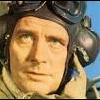




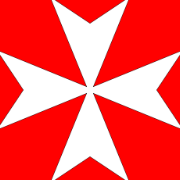



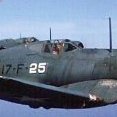
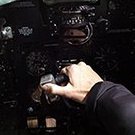
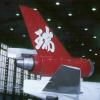

.thumb.jpg.d3635a7ef6507d35f372dd09671fe96f.jpg)
